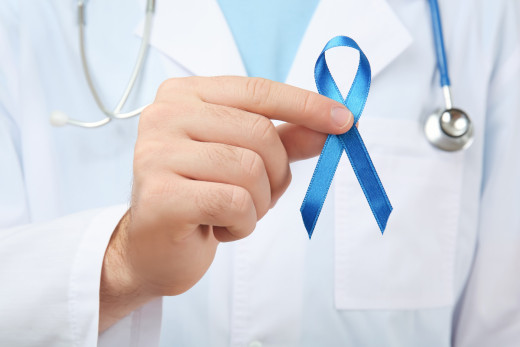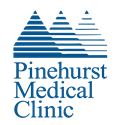February 16th, 2024

March is National Colon Cancer Awareness Month, so there is no better time to discuss colon cancer and the importance of screening.
Colorectal cancer (CRC), or cancer of the colon or rectum, is the second leading cause of cancer death in the United States. The American Cancer Society estimates that almost 153,000 Americans will be diagnosed with CRC in 2024, and about 53,000 people will lose their lives to this preventable disease. In North Carolina alone, almost 3,500 people will be diagnosed. Some of these individuals could even be your family, friends, or neighbors.
CRC is a terrible disease, but there is a silver lining. Unlike other lethal cancers originating in the lung, breast, and pancreas, CRC is the only cancer that can be prevented at the same time screening is being performed.
It is estimated that about 95% of colon cancers begin as benign but precancerous growths in the colon called polyps. Colon polyps, clumps of cells on the inner lining of the colon, are extremely common in the American adult population. Over time, mutations in their DNA can occur, causing them to grow, spread deeper into the colon wall, and transform into malignant growths which can spread to lymph nodes around the colon and even distant sites throughout the body. Fortunately, this process takes many years, so there is an ample window of opportunity to detect these polyps early and remove them before becoming cancerous.
Over the last several decades, colonoscopy has become a commonly performed cancer screening procedure. Because of the increasing use of colonoscopy for CRC screening, decreased smoking, and improved treatments, the good news is that death rates from CRC have decreased in women by 60% since 1969 and by 55% in men since 1980.
Though rates of CRC deaths have dropped, the unfortunate fact is that only 72% of Americans are up to date with colon cancer screening. North Carolinians are faring a little better than the national average, as 75% of NC residents have been screened for CRC. But this still leaves 1 out of 4 people at higher risk for developing CRC. Certain subgroups of people, including Asians, Hispanics/Latinos, and Native Americans, have screening rates well below average.
In recent years, there has been an alarming rise in CRC among young people. Overall, the lifetime risk of Americans developing CRC is about 1 in 23, but the rate of CRC is rising precipitously in those under 55 years of age. Since the mid-1990s, the incidence of CRC in people under 55 has risen by 1 to 2% per year. Since the mid-2000s, the death rate from CRC in people under 50 years of age has increased by 1% annually. Today, CRC is the leading cause of cancer death in men and the second leading cause of cancer death in women under age 50. Unfortunately, due to delayed detection, younger people often have more advanced diseases and are less likely to respond to treatment.
It is not yet known what is responsible for this disturbing trend. Many theories exist but more than likely, it is a combination of factors. A sedentary lifestyle and being overweight or obese may be important. Smoking and excessive alcohol use may factor in. Eating a diet low in fiber and high in fats, meats, and ultra-processed foods also may contribute. Genetics plays a role in certain cancers, as a family history of CRC and genetic syndromes (such as Lynch syndrome) increase risk.
Like any other disease, detecting CRC early improves survival. It is important to pay attention to symptoms and seek timely medical care. Procrastination or attributing symptoms to benign conditions like hemorrhoids is easy, but a delay in diagnosis could be disastrous. Seek medical attention if blood is visible in the stool or toilet bowl, or if there is a persistent change in the stool. This includes a change in stool caliber (thin, narrow stools) or a change in bowel frequency (diarrhea or constipation). Unusual fatigue or low energy levels can be the result of anemia due to chronic but slow (and not visible) gastrointestinal bleeding. Unintentional weight loss is another symptom that should prompt medical attention.
Most importantly, get screened for CRC on schedule. Do not put it off. The American Cancer Society recommends everyone age 45 and older be screened for CRC. For some people with risk factors such as a family history, a screening exam even earlier may be appropriate. Discuss your medical and family history with your primary care provider to determine when to begin colon cancer screening.
Several different screening tests have been approved by the US Preventive Services Task Force, a national group of experts in disease prevention. Colonoscopy is the gold standard of screening. Noninvasive tests such as the Fecal Immunochemical Test (FIT) and Multitarget Stool DNA test, better known as Cologuard®, are also available. It is important to understand the differences between them to know which type of screening is most appropriate for you.
A colonoscopy is a one-step test performed under sedation. The colon is thoroughly inspected for colon polyps which are removed if discovered. Other abnormalities such as diverticulosis, inflammation (colitis), and hemorrhoids can also be diagnosed if present. If the exam is normal, colonoscopy is recommended every ten years in average-risk individuals. It is the only test recommended for people at higher-than-average risk for colon cancer.
The quality of a colonoscopy is critical and impacted by two major factors. The first is the cleanliness of the colon. Bowel preparation is exceedingly important because finding polyps can be difficult with residual stool in the colon. The second is the doctor performing the exam. It is crucial to have the procedure performed proficiently by a physician with the proper training and experience. Not all colonoscopies are the same.
Noninvasive tests are two-step tests. FIT is a stool-based test checking for the presence of blood. If blood is detected, a colonoscopy is required to exclude pathology that could cause blood loss. It is important to remember that not all polyps will result in microscopic blood in the stool, and the stool sample that is submitted is only checking for blood at one moment in time. If FIT is chosen for screening, it must be done annually.
Cologuard®, another choice for colon cancer screening, analyzes stool for the presence of abnormal DNA mutations associated with colon cancer and precancerous polyps, as well as the presence of microscopic blood. A positive test result requires a follow-up colonoscopy. Studies have shown that Cologuard® can detect over 90% of colon cancers, but it is less effective at detecting precancerous polyps and over 10% of positive tests can be false positives. Cologuard® testing is recommended every three years.
Because of the Affordable Care Act, screening tests are now covered by health insurance. That means a screening colonoscopy, FIT, or a Cologuard® could be potentially free of cost. However, it is important to remember that after a positive FIT or Cologuard®, insurance companies consider the follow-up
colonoscopy to be diagnostic (not screening), and the cost of the procedure may be applied to your copay and/or deductible.
Colon cancer can strike anyone, from actors like Chadwick Boseman to athletes like Pelé, and even presidents like Ronald Reagan. It develops silently, so an absence of symptoms should never discourage screening. It is common and it is deadly. And it is becoming more prevalent in younger people. BUT IT IS PREVENTABLE! Seek medical attention for unusual gastrointestinal symptoms or get screened at the appropriate age to remain feeling well. Disgust for bowel preparation or a busy schedule is no reason to be at risk. Undergoing CRC screening will give you peace of mind, and it may save your life.
Dr. Varanasi is a Fellow of the American Gastroenterological Association and is accepting new patients at his office locations in Pittsboro, Sanford, and Pinehurst. To make an appointment, please call (919) 292-6110.
Back





